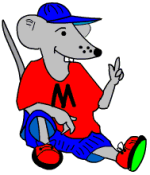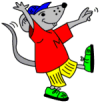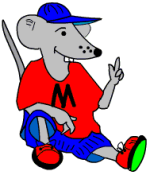 Larger numbers can be rounded in just the same way as rounding hundreds or thousands, always referring to the digit below the one you want to round.
Larger numbers can be rounded in just the same way as rounding hundreds or thousands, always referring to the digit below the one you want to round.
Eg rounding to a million, look at the hundred thousand digit:
2 345 456 is rounded down to 2 000 000 (two million) to the nearest million because the hundred thousand digit is only 3.
2 987 654 is rounded up to 3 000 000 (three million) to the nearest million because the hundred thousand digit is 9.
Children are often fascinated by large numbers and there are plenty of good sources in geography, such as population figures, areas of countries etc
6201-03 Rounding to the nearest million (pg 1)
6201-04 Rounding to the nearest million (pg 2)

 Imperial Units and quick conversion to metric.
Imperial Units and quick conversion to metric. Plenty of shape names to learn. By year 6 children should be able to use, read and write the following words:
Plenty of shape names to learn. By year 6 children should be able to use, read and write the following words: Below are some maths problems written in words. They are known as ‘single step operations’ as only one mathematical process is necessary to solve them. Children find word problems very difficult, but the one step type are much, much easier than the two step.
Below are some maths problems written in words. They are known as ‘single step operations’ as only one mathematical process is necessary to solve them. Children find word problems very difficult, but the one step type are much, much easier than the two step.